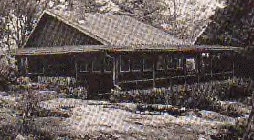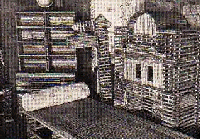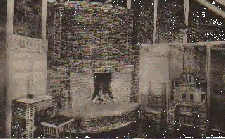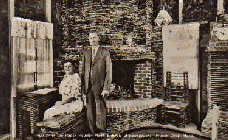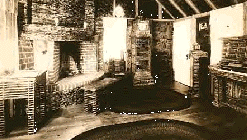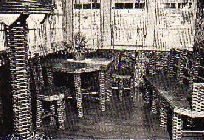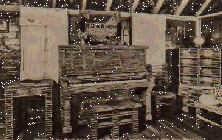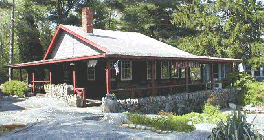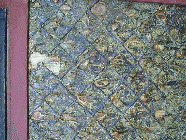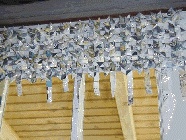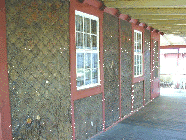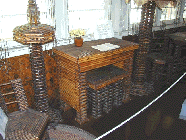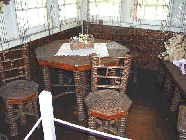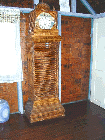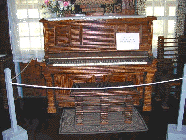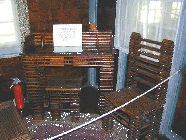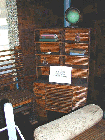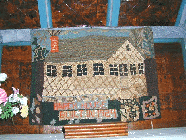In 1922 and through the Depression, Elis F. Stenman decided to experiment with old newspapers. A mechanical engineer and amateur inventor, Elis built this summer house in Pigeon Cove, MA to prove that paper makes good insulation. He created a building block material purely out of newspaper. He glued layers of newspaper together and then subjected it to 2 tons of pressure. These paper logs were cut and then varnished and stapled or nailed together. Stenman and his family built the two-room summer home AND all the furniture in it entirely of newspapers in a 20-year project. With donations of papers from friends and neighbors, approximately 100,000 newspapers were used. Now THATís recycling!
The only wood used in the house was for the frame, floor and roof. The walls are made of with 215 layers of newspaper and are one inch thick. They are protected by a large overhanging roof (covered with tar and shingles). Originally, Stenman planned to cover the outside of the walls with clapboard but just didnít get around to it. He was curious to see what would happen to the paper.
The house itself was done in 1924 and Stenman began living in it during the summers and building the furniture inside. The furniture is usable and quite heavy. It is entirely made of paper except the piano (simply covered with paper) and the radio (covered with news of Herbert Hooverís presidential campaign in 1928). The grandfather clock was made from daily newspapers from each of the capitals of the 48 states (no Alaska or Hawaii in the 1930s). The bookcase near the bed was made from foreign newspapers. One desk was made with Christian Science Monitors. Another desk with newspaper reports of Lindbergh's solo flight across the Atlantic in 1927. (In the postcard view above, there appears to be a portrait of Lindbergh hanging above it.) There are also octagonal tables, chairs and a fireplace (made of paper except for the chimney!). Mrs. Stenman made all the drapery of paper (using the comics for color).
The house was wired for electricity and had running water but no bathroom. An non-paper outhouse is nearby. A porch was added in the early 1930s and it helps to protect the Houseís walls. Word got around about the Paper House and it became a local attraction in the 1930s. But it did not become a full-fledged museum or charge admission until Stenman died in 1942.
To maintain the building, the walls are re-varnished from time to time. But the interior is left as is so you can still read the papers. The current owners (Stenmanís grandniece) live next door (in a regular house), give tours and care for the Paper House.
For more, see these websites: 1, 2, and 3.









